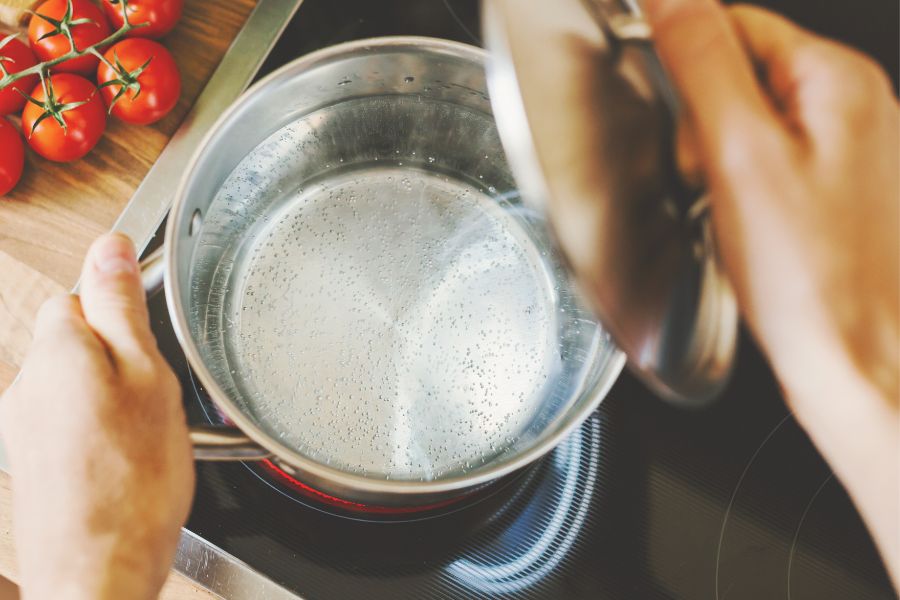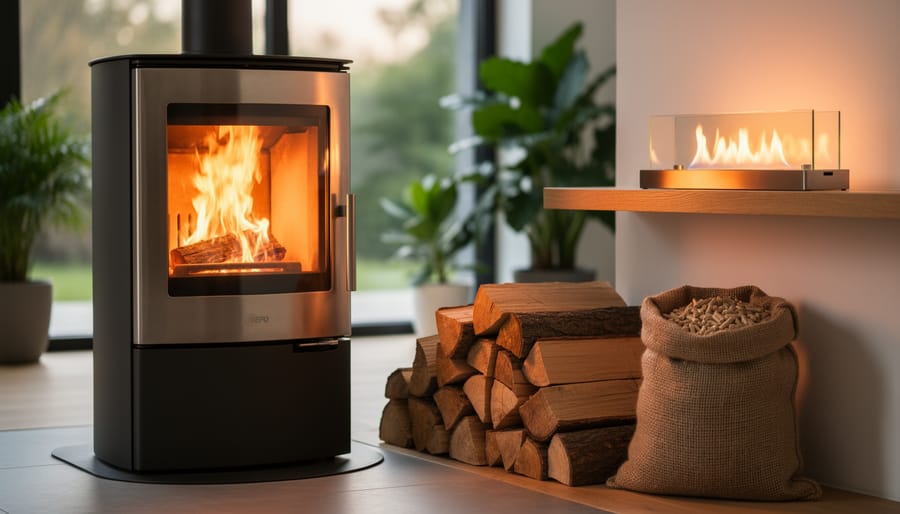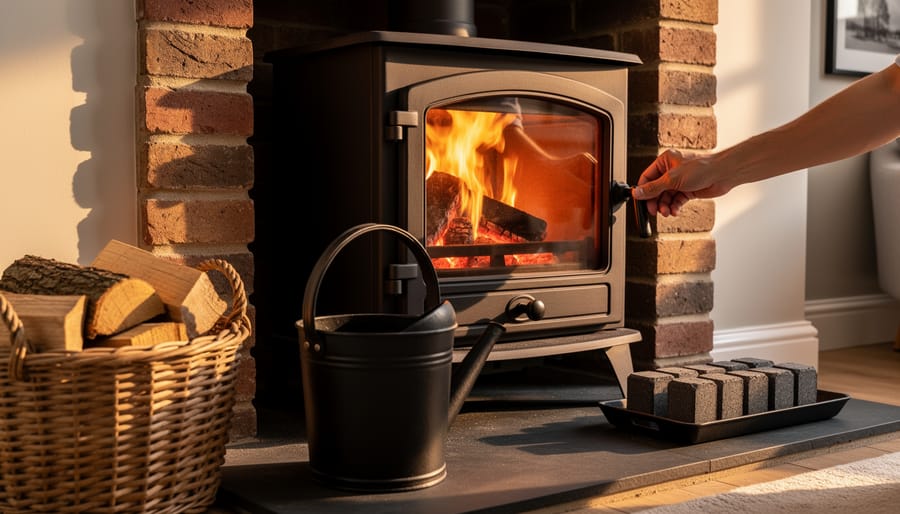Simmer is a term that refers to cooking food in the water at low, steady heat. Simmering is one of the best ways to cook meats and vegetables since it allows them to cook through evenly without drying out or burning on the outside.
You may have seen a pot of noodles simmering on your stovetop—this is an example of simmering. If you are wondering what simmering looks like compared with boiling or just need some tips on bringing your dishes from simmering to steaming hot perfection, read on!
What Is Simmer?
If you are still determining what a simmer is, it might be time to get acquainted with the term. A simmer is similar to boiling water, but there are subtle differences that you should know about if you want to master this basic cooking technique.
Simmering is a gentle, low-heat cooking technique that involves heating liquid until bubbles form around the edges of your cooking pot and then gently breaking them without letting them overflow into an active boil.
This process takes place at 185°F–205°F (85°C–96°C). While it may sound simple enough, there are actually two types of simmers: Simmering something on the stovetop or simmering in liquid in a pot or pan on top of your stovetop (like making soup).
It is also possible to use this term when describing how much liquid is needed for something else to cook properly. For example, “You need enough water so that your pasta will be covered by three inches,” meaning that it’s being simmered underneath all that delicious pasta goodness!
The Opposite of a Simmer Is a Boil

The simmering bubbles in your pot are a good indicator of what kind of heat you are using. A boil is a rapid and violent movement, while a simmer is more like the subtle ripples from your boat’s wake. Simmering might look like boiling, but it’s not. Boiling water is when the surface of liquid moves quickly and violently; simmering occurs at a steady, gentle pace.
If you want to stir-fry meat or vegetables or make an omelet, use medium-high heat so that your pan gets hot before adding oil. This will allow your food to cook evenly with less chance of burning.
If you are making soup with lots of broth already in it (like chicken noodles), turn down the temperature slightly so as not to prevent any ingredients from overcooking before they have time to soften enough for optimal flavor absorption.
What Does Simmer Look Like?
A simmer is when the liquid in a pot is boiled at a slow, steady rate. The bubbles in this water are released slowly and steadily, with no large bursts of bubbles coming out all at once. The bubbles are also smaller than they would be if you were boiling at a full boil or even close to it. If you are using your stovetop burner, you should hear gentle bubbling instead of one continuous “whoosh” noise as the water rises to temperature.
Allowing boiling liquids to sit for longer periods (like overnight) can cause problems with your food because it can change its taste or texture due to chemical reactions between different ingredients within your meal!
How to Simmer?
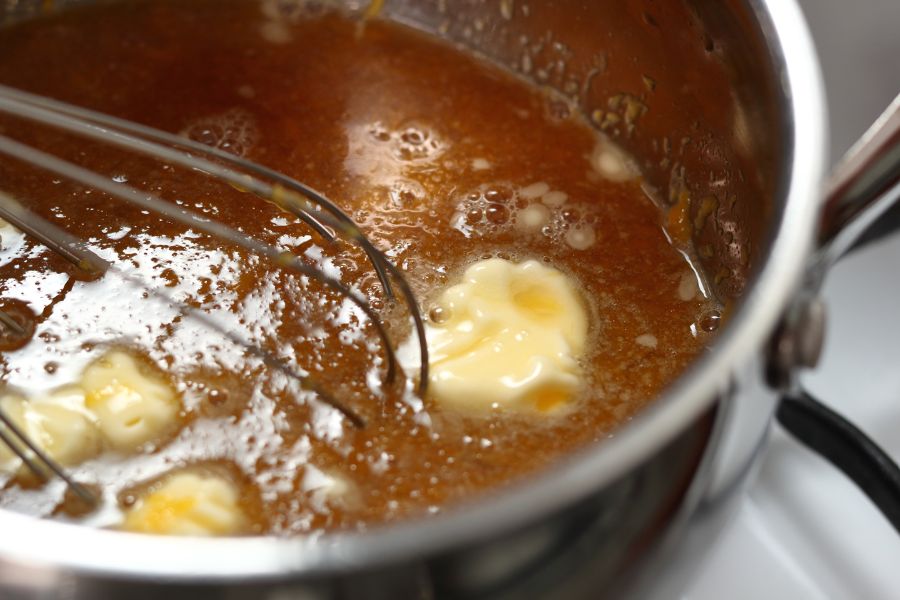
The best way to simmer is to remove the food from the heat source and add a liquid. Then you can cook on low heat, stirring occasionally.
You allow your food to cook slowly over low heat when you simmer. This is a great method for cooking tough cuts of meat and helping them become tender and juicy. Simmering is also a good way to infuse flavorful liquids (like wine or stock) into your dish. This helps the flavors permeate the entire meal.
You can tell when something is simmering if it has been placed in a pot with enough liquid, so it’s at least half covered by liquid but not floating. The food will boil rather than simmer if there’s too much water. If there is not enough water, it will burn on the bottom of the pan before cooking through on top or vice versa, depending on what you are making.
Difference Between Simmering and Boiling
Let’s start with the differences between boiling and simmering. If you boil, you quickly heat the water to evaporate faster than it does at room temperature. This results in bubbles forming on the surface of your pot and rising to the top. As a result, many people do not want to leave their food unattended while boiling because it can easily burn if left unattended for too long!
Boiling is also when something is cooking at 100° Celsius – or 212° Fahrenheit.
So What Does Simmering Look Like?
Simmering happens when you heat up your pan just below its highest point (i.e., turning down your gas). It’s more controlled than boiling because there isn’t as much evaporation taking place but still enough liquid coming off so that some steam escapes into your kitchen!
If you are cooking pasta or other foods in a large pot of rapidly boiling water, that is boiling rather than simmering. Simmering isn’t just “less intense” than boiling; it’s also slower and more controlled: if any bubbles come up from underneath your food while it simmers, remove the pot from heat immediately and let things calm down for a minute before continuing to cook as normal.
Do You Simmer With a Lid On or Off?
If you have to ask, it’s time to get acquainted with the art of simmering!
The rule of thumb is: if you are cooking something that has to remain moist—like stew, soup, or a braise—then yes. If you cook something dryer, like chicken thighs or pork chops, then there is no need for an open top.
This is because the lid traps moisture inside your pot, which is great when trying to keep things moist. But if you are cooking something dryer—like chicken thighs or pork chops—then no need for an open top.
Water Simmers at 212° Fahrenheit (100° Celsius)
The temperature of simmering water is exactly 212° Fahrenheit (100° Celsius). This is the boiling point of water at a pressure of 1 atmosphere.
It’s also the temperature that you should use to simmer food. If you have ever boiled pasta, you know that it takes longer than a few minutes to cook it all the way through. And if you have ever simmered a stew or soup, then let it cool down and reheated it later, and then tasted it again—you know that once food has been heated below 212° Fahrenheit (100° Celsius), its flavor changes irrevocably.
Benefits of Simmering
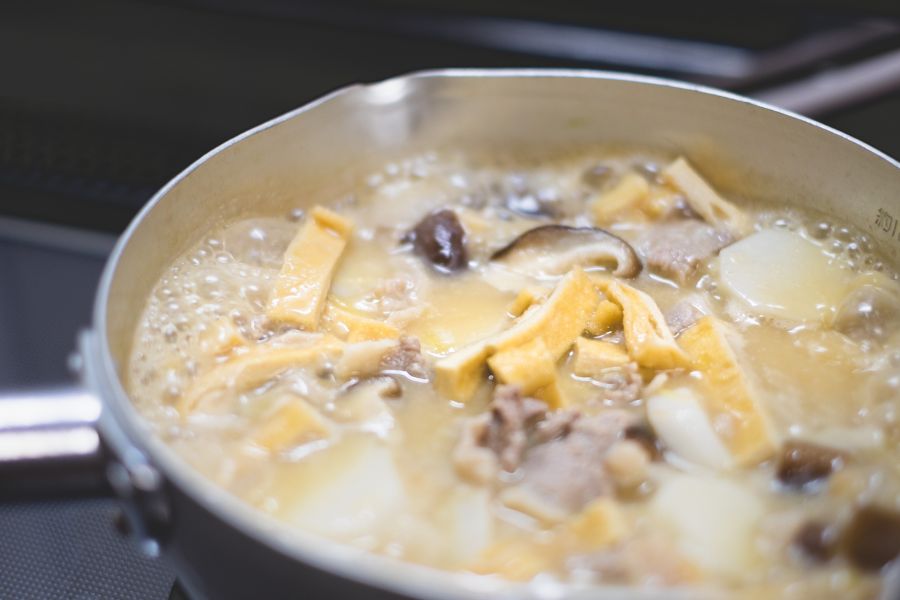
It Works for More Foods
You can simmer practically any food in a pot or pan. But some foods are more suitable to simmering than others.
For example, you should never submerge the meat in boiling water because it’ll come out tough and dry. And certain vegetables like broccoli will overcook if you boil them for too long. Simmering is also ideal for making soups, sauces, and braising meats, so they are tender enough to cut easily with a fork.
You can actually simmer most kinds of food: meats (including pork), fish, shellfish, and chicken; vegetables; fruits like apples; soups and stews; grains like rice or quinoa—and even desserts like custards! You don’t need any special equipment for this cooking method either—just a large pot with a lid that fits tightly so that heat doesn’t escape during the process.
It Retains More Nutrients
When you simmer food, you do it at a low temperature for a long time. This allows more time for nutrients to leach out of the food, making them easier to digest and absorb by your body.
Also, since you are cooking it at such a low temperature, the food is more likely to retain its color and flavor. Since there is less water in the pot than if you were boiling or steaming it (the only other option), foods are also less likely to lose shape.
It’s Easier to Control the Temperature
You can set the temperature to low, medium, or high. This makes it easier for you to control the heat and maintain a constant simmer, which is ideal for many recipes. It is also much easier to keep a slow simmering temperature than a fast, boiling one.
It’s Safer Than Boiling
Simmering is safer than boiling. The slower heat allows for less splashing and burns, so you won’t have to clean up after yourself when you cook. It is also much less likely that your food will boil over and make a mess in the kitchen. And if it does, it’s easier to clean up afterward—not so with scalding hot water!
It Saves Energy
Simmering uses significantly less energy than boiling and is more efficient than baking. While simmering, the water temperature remains between 180° and 190° F. This means that the water won’t evaporate, and your food will have a chance to cook evenly.
Simmering also requires less cooking time than boiling or baking because of its lower heat level. Because there’s no water evaporation during simmering (due to the constant simmer), you can cook in smaller batches without needing to replenish the amount of liquid in your pot with every batch.
Simmering – Something Delicious Is Cooking
When you see someone simmering something, they are likely in the process of either cooking or preparing something delicious. This can mean that they are making soup, stew, or chili; it can also signify that they are cooking an egg for breakfast. It’s even possible that a simmering pot is used to make tea!
Now that you are an expert on this technique, you can start cooking with it!

